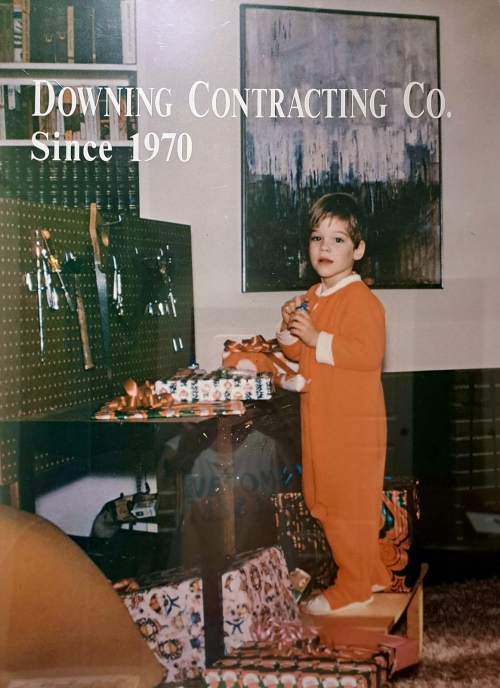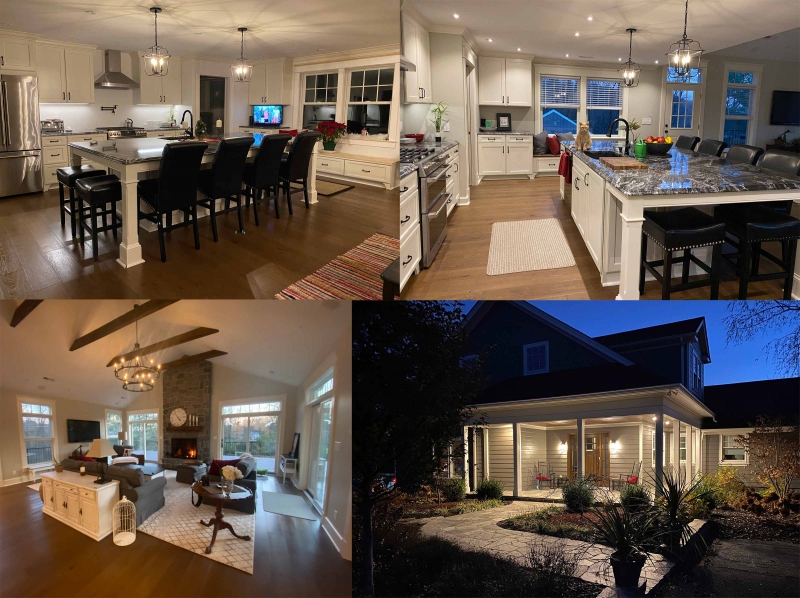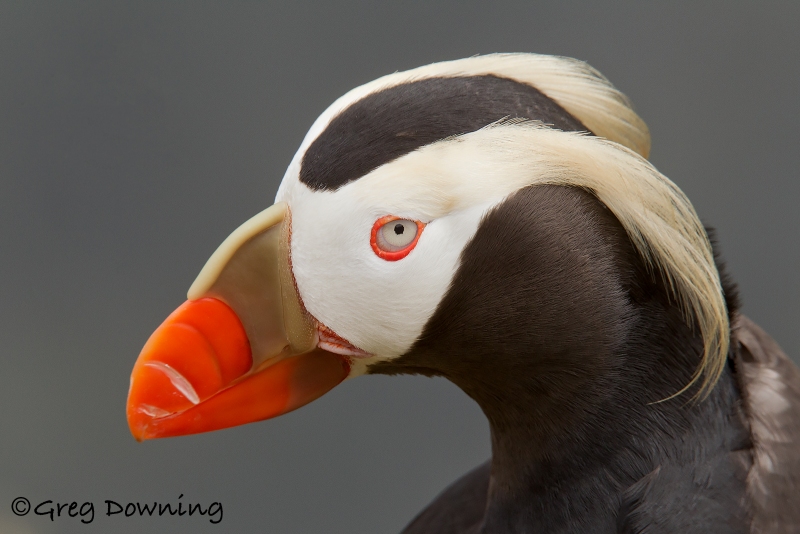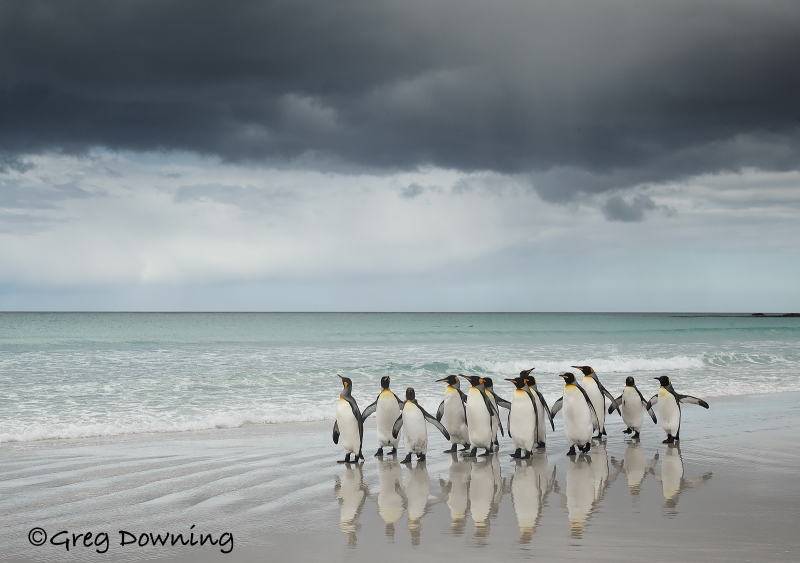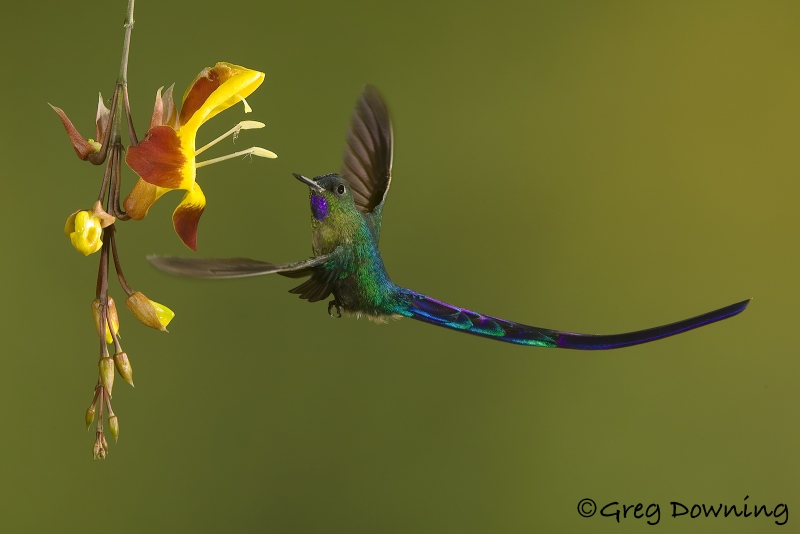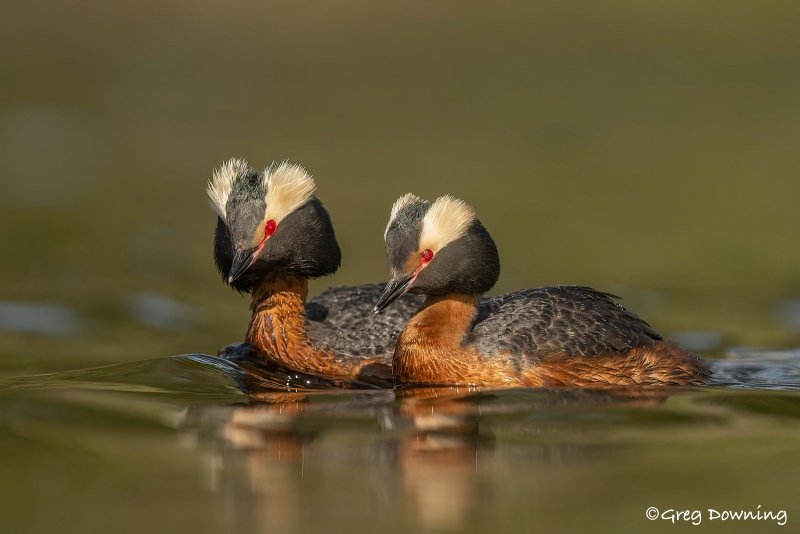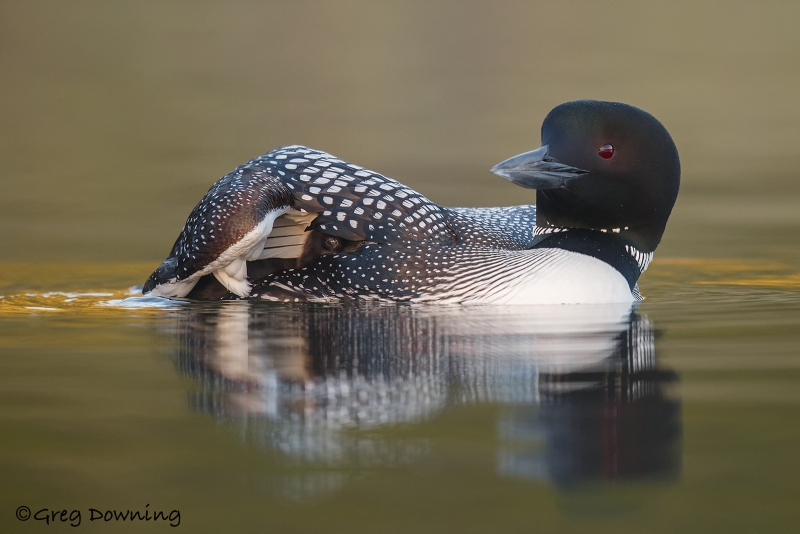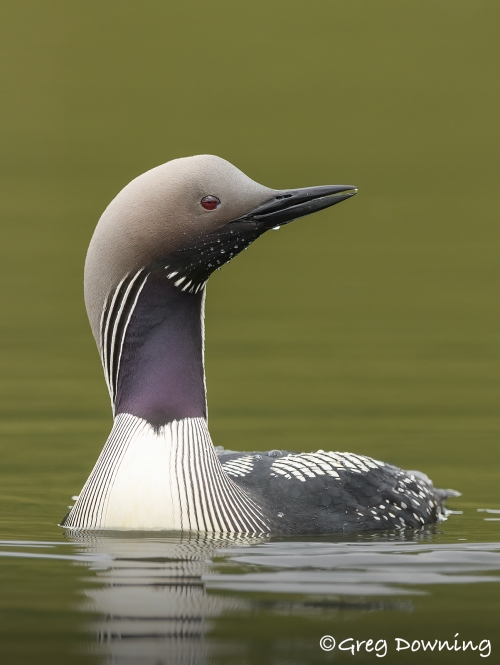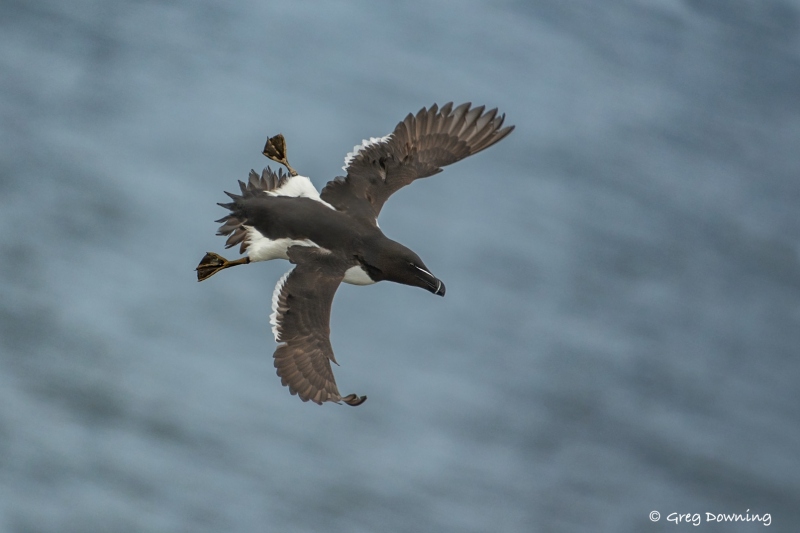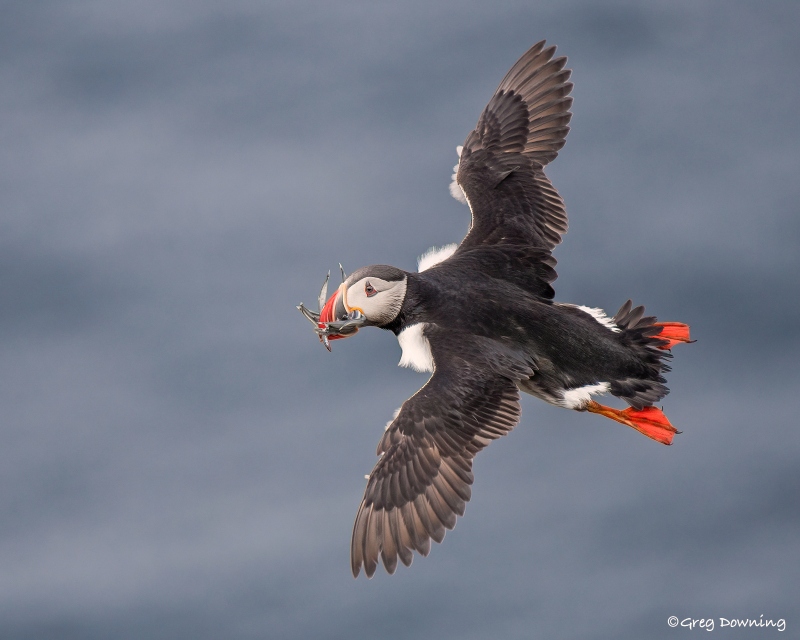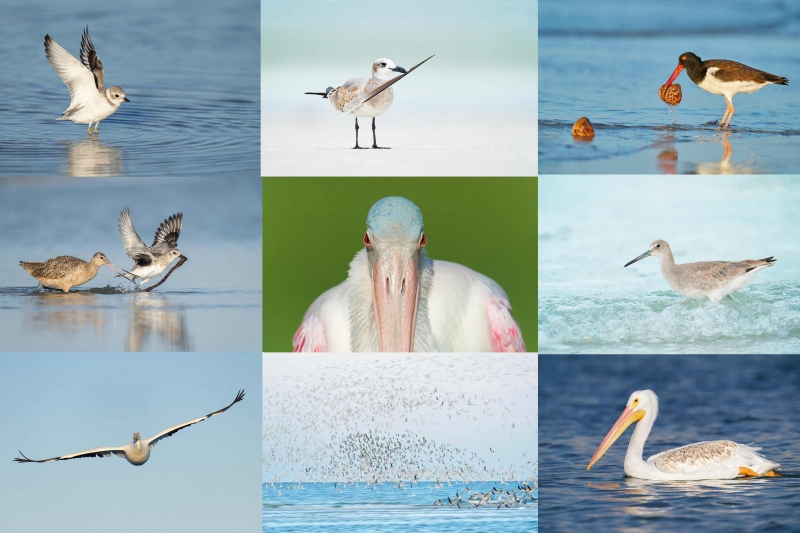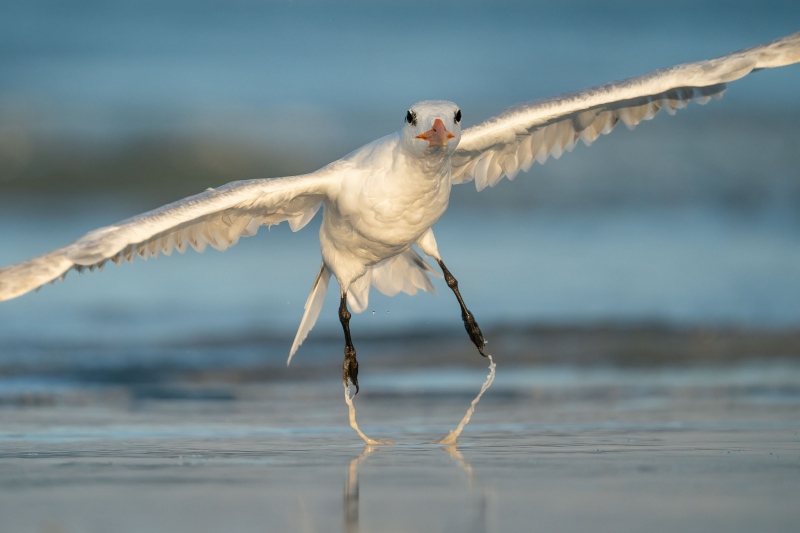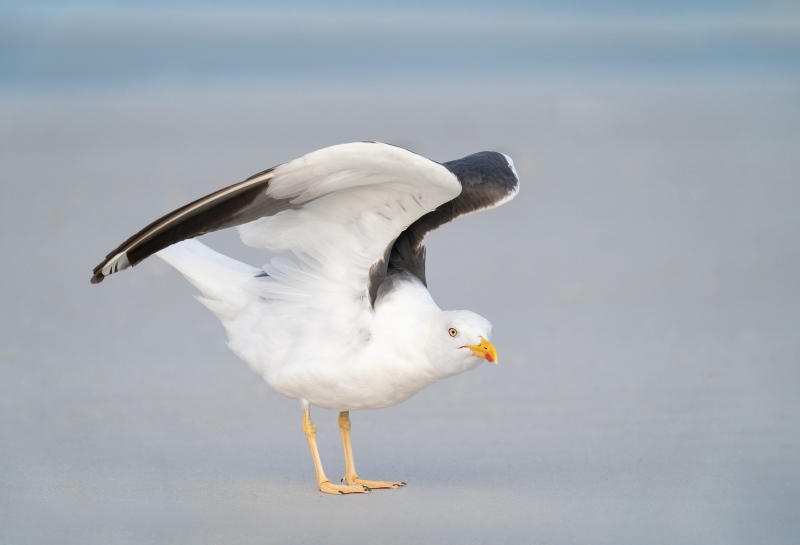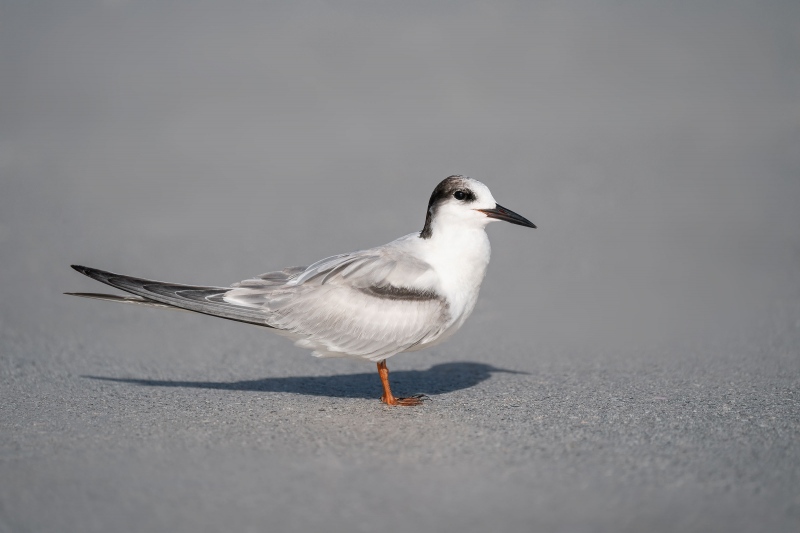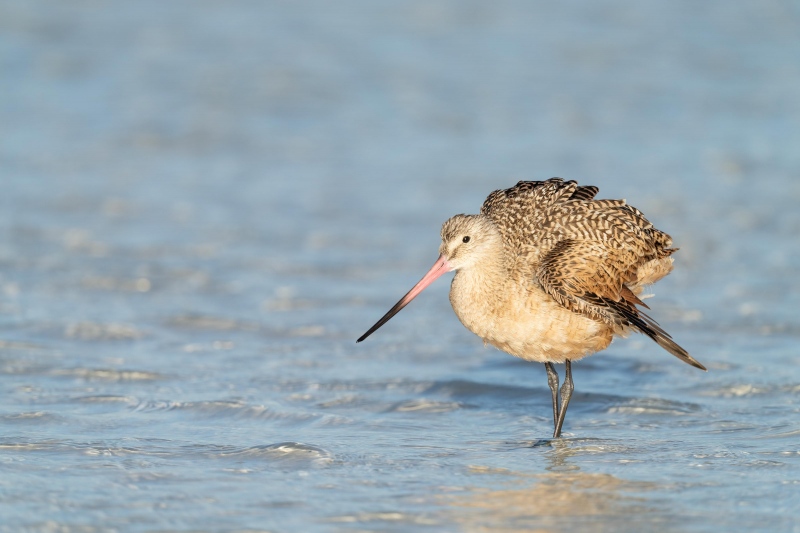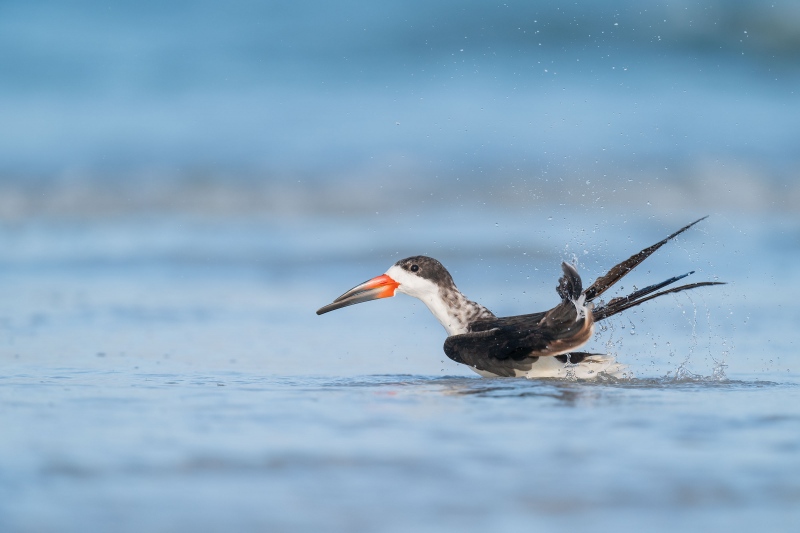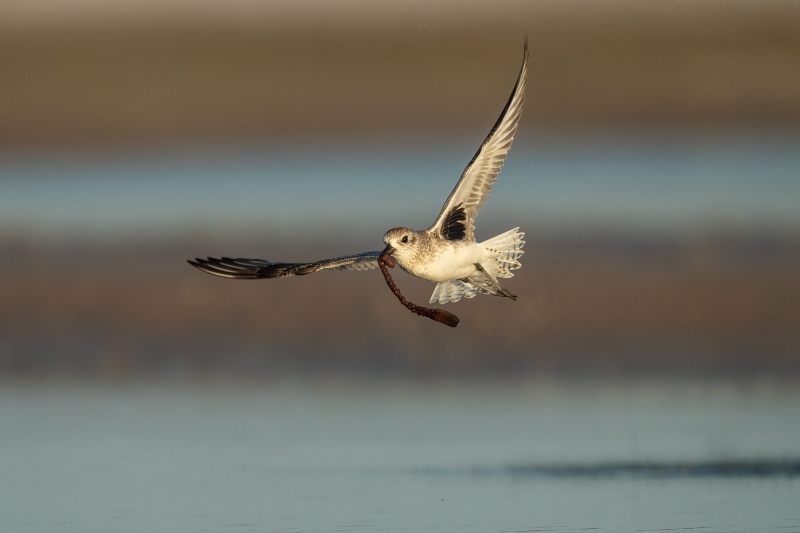July 24th, 2023 What’s Up?
It drizzled for most of Sunday. In the afternoon, I sat in stinky, rotting kelp for three hours photographing worn, molting adult Purple Sandpipers and Arctic Terns. The terns were hunting small invertebrates of some sorts, probably
arthropods.
Today is Monday 24 July 2023. It is not raining and I am heading out early.
Wherever you are and whatever you are doing, I hope that you too have a great day.
If you would like info on the 2024 and/or the 2025 puffin trips, please shoot me an e-mail by clicking here.
Please remember to use the B&H and Amazon links that are found on most blog pages and to use the BIRDSASART discount code at checkout when purchasing your new gear from Bedfords to get 3% back on your credit card and enjoy free second-day air FedEx. Please, also, consider joining a BAA IPT. You will be amazed at how much you will learn!
You can find some great photo accessories (and necessities, like surf booties!) on Amazon by clicking on the Stuff tab on the orange/yellow menu bar above. On a related note, it would be extremely helpful if blog-folks who, like me, spend too much money on Amazon, would get in the habit of clicking on the Amazon logo link on the right side of each blog post when they shop online. As you might expect, doing so will not cost you a single penny, but would be appreciated tremendously by yours truly. And doing so works seamlessly with your Amazon Prime account.
If an item — a Delkin flash card, or a tripod head — for example, that is available from B&H and/or Bedfords, is also available in the BAA Online Store, it would be great, and greatly appreciated, if you would opt to purchase from us. We will match any price. Please remember also to use my B&H affiliate links or to earn 3% cash back at Bedfords by using the BIRDSASART discount code at checkout for your major gear purchases. Doing either often earns you free guides and/or discounts. And always earns my great appreciation.
|
|
|
Greg liked working with tools early on
Image courtesy of and copyright Greg’s Mom
|
Greg Downing at Age Four
Greg got his first tool set when he was four years old. He needed to stand on a bench to get up to the height of the worktable. That his dad Howard was an architect spurred Greg’s interest in home construction.
|
|
|
Greg built his own home during COVID
Image courtesy of and copyright Downing Contracting Company
|
Downing Contracting Company
Custom Home Building, Remodeling, and Renovation
Greg started the Downing Contracting Company (all by himself) in 1985 when he was just 19 years old. As you can see above, he is an incredibly talented builder; I am envious of his skills and knowledge. Can you imagine building an entire home from the ground up by yourself? I have always wished that I could build (or even fix) something with my own hands (heck, I’m Jewish…), and wished that I could sing well or play a musical instrument. And so it goes (Billy Joel).
|
|
|
This image was created by Greg Downing at St. Paul Island, Alaska. While hanging over the edge of a steep cliff, hundreds of feet above the Bering Sea, he used the handheld Canon 300mm f/2.8 IS L lens with the Canon EOS-1D Mark IV. ISO 800: 1/320 sec. at f/11.
Image #1: Tufted Puffin head portrait
Image courtesy of and copyright Greg Downing Photography
|
Greg Downing and Bird Photography
Greg began bird photography in the mid-late 1990s. He purchased his first telephoto lens, “from some unknown dude in Las Vegas, a Canon 400mm f/2.8 non IS with a 2X. TC (horrible vignetting).” His then-girlfriend got him a hard copy of The Art of Bird Photography (by yours truly). He skipped the intro and got right to the meat and potatoes. Some time after that, he finally read the foreword and was moved to tears as he read about the loss of my beloved wife Elaine. Then he e-mailed me, thanked me for the great book, and sent his condolences. I e-mailed him back within minutes and invited him to join me in Cape May for an IPT.
That was one of my first-ever Instructional Photo-Tours, probably in the spring of 1998 or thereabouts. In his own words, “It was you, me, Ned Harris and someone else whom I don’t remember. If I recall, it was $250 for the three-day IPT — the deal of the century!”
Soon thereafter, Greg assisted me on a St. Paul Island/Pribilofs IPT. Transport was via a Boeing 727-100 aircraft flown by Reeve Aleutian Airlines. The landings and take-offs and most everything else were done in very foggy conditions. As I recall, there had been at least one big crash on a landing at St. Paul. One time we landed in the fog and a wheel broke off the plane. I was stranded for days until they flew in replacement parts and a work crew.
Anyhoo, Greg remembers that we took turns holding each other by the ankles as we leaned too far over the edge of a big cliff. The multitudinous seabirds there included Horned and Tufted Puffins, Least, Parakeet, and Crested Auklets, Thick-billed and Common Murres, and Red-faced Cormorant. I heard recently that the Least Auklets have disappeared. Anyhooo, there are many great memories of a foggy place shared with a friend.
|
|
|
This image was created by Greg Downing at Volunteer Point in The Falklands. He used the handheld Canon 24-70mm wide angle zoom lens (at 55mm) with the Canon EOS-1Dx. ISO 800: 1/1000 sec. at f/11.
Image #2: King Penguins/stormy skies
Image courtesy of and copyright Greg Downing Photography
|
Greg’s Amazingly Wonderful Life and Career in Nature Photography
Like me, Greg has been blessed to have traveled the world teaching interested folks to improve their photography. And like me, he has made many lifelong friends along the way.
Here is just a partial list of the great places he has been privileged to visit: Cape May, New Jersey; Jamaica Bay Wildlife Refuge, Queens, NY; Bosque del Apache NWR (when it was good); Churchill, Manitoba, Canada, Nome, AK. Homer, AK; St. Paul, AK; Silver Salmon Creek Lodge, AK; Katmai National Park, AK, San Diego, CA; the Falklands, the Southern Ocean, Ecuador; the Galapagos Archipelago; Columbia, Costa Rica; Iceland; multiple world class photo locations in Africa, the Texas coast for migrant songbirds; the Rio Grande Valley; British Columbia, Canada; India, for tigers: The Himalayas, Ladakh, India, for Snow Leopard; Patagonia; Yellowstone National Park, Montana; the Pantanal, Brazil; Pôrto Jofre, Mato Grosso, Brazil for Jaguar; his own backyard in Maryland, and many more.
|
|
|
This image was created by Greg Downing in Ecuador. He used the tripod-mounted Canon 70-200mm at 145mm with the Canon EOS 5D. ISO 250: 1/200 sec. at f/16 (multiflash set up using 4 flashes at 1/16 power).
Image #3: Violet-tailed Sylph
Image courtesy of and copyright Greg Downing Photography
|
Similarities
Greg’s style of bird photography is flatteringly similar to mine, clean, tight, and graphic. We both strive to create images with non-distracting backgrounds. We both love head shots. We both love soft light on cloudy-bright days. And at one point in our careers, we both did some multi-flash hummingbird work. (See the The Hummingbird Guide – How to Photograph Hummingbirds Using High-Speed Multiple Flash by Linda Robbins with Arthur Morris.)
Greg founded an educational website, NatureScapes.Net, with several friends and is now the sole owner. I founded an educational website, BirdPhotgrapher.Net with several friends, and am now the sole owner. Greg developed the Skimmer and the Skimmer II and has sold several thousands of them. I invented the BLUBB and have sold many hundreds of them.
We both have used and depended on Delkin flash cards for more than two decades. We both began using Canon gear and we both switched to Nikon at some point. Then I graduated to Sony. Greg loves his Nikon Z9.
We both have a burning passion to make great images and to teach others to do the same thing.
|
|
|
This image was created by Greg Downing in Kamploops, British Columbia, Canada. He used the tripod/Levered-Clamp FlexShooter Pro-mounted Nikkor 500mm/f4E with 1.4X TC-E (at 700mm) with the FTZ-II adapter and the Nikon Z9. ISO 640: 1/1250 sec. at f/7.1.
Image #4: Horned Grebes courting
Image courtesy of and copyright Greg Downing Photography
|
About Greg
Greg has been traveling the world teaching professional and amateur photographers for more than two decades while hosting instructional workshops and seminars. Instructing photographers of all experience levels, Greg has earned a reputation for his gracious and generous teaching style.
Greg’s images are known for their unique style, exacting composition and strict attention to detail. As an internationally recognized photographer, his numerous publishing credits include books, advertising campaigns and editorial publications such as Birding Magazine, Outdoor Photographer Magazine, Birder’s World, National Geographic and many others. Especially passionate about birds, his images can also be found in printed form in several Wildbird Centers on the east coast, as well as appearing in private art exhibitions.
In 2003 Greg founded www.NatureScapes.net with E.J. Peiker and Heather Forcier. Today Greg is the Publisher, President and sole owner of the company and oversees all operations from his home base in Manchester, Maryland.
As Greg travels the world making great images, he enjoys meeting others, teaching, and sharing his passion while making new lifelong friends in the process.
|
|
|
This image was created by Greg Downing at Kamploops, British Columbia, Canada. He used the Canon 500mm f/4 L IS lens with the 1.4X TC (at 700mm) and the Canon EOS-1D X on a flattened tripod. ISO 1600: 1/500 sec. at f/5.6.
Image #5: Common Loon with chick peeking out from under the adult’s wing
Image courtesy of and copyright Greg Downing Photography
|
Loons
Greg has been photographing Common Loons with chicks in BC for 15 or so years. He is the Loon Whisperer. He makes a cooing sound to attract mother loons; they swim right up to his water craft and bring their chicks.
|
|
|
This image was created by Greg Downing in northern Iceland. He used the tripod/Levered-Clamp FlexShooter Pro-mounted Nikkor 500mm/f4E with the Nikon D850. ISO 1600: 1/1250 sec. at f/5/5.6.
Image #6: Arctic Loon in breeding plumage
Image courtesy of and copyright Greg Downing Photography
|
Arctic Loon
Arctic Loon breeds mainly in Northern Europe and is rarely seen in Iceland. They are incredibly rare in North America and are on every birder’s most wanted list. On one of his first Iceland trips, Greg found this amazingly beautiful bird on a dark rainy afternoon. He returned the next morning in decent weather and made many great images showing the bird’s spectacular purple throat.
|
|
|
This image was created by Greg Downing at Grimsey Island, Iceland. He used the handheld Nikkor 70-200/f2.8 with 1.4X TC (at 270mm) with the Nikon D5. ISO 1000: 1/4000 at f/4.
Image #7: Razorbill in flight, dorsal view
Image courtesy of and copyright Greg Downing Photography
|
Grimsey Island
Greg began running trips to Grimsey Island about six years ago. It is accessible by air or by ferry. Simply put, it is the best photography location on the planet for Atlantic Puffin and Razorbill.
If you would like info on Greg’s 2024 and/or 2025 puffin trips, please shoot me an e-mail by clicking here.
|
|
|
This image was created by Greg Downing at Grimsey Island, Iceland. He used the handheld Nikkor 70-200/f2.8 with 1.4X TC (at 270mm) with the Nikon D5. ISO 1600: 1/4000 at f/4.
Image #8: Atlantic Puffin in flight with sand eels, dorsal view
Image courtesy of and copyright Greg Downing Photography
|
On Friendship
Twenty-five years ago we had a great friendship. Over the years, we had drifted apart. Neither of us is sure of why that happened. Being here together on Grimsey has renewed our friendship and we have had boatloads of fun. It is never too late to get in touch with old friends.
Your Call?
Which two of Greg’s eight fabulous images do you feel are the strongest? Please leave a comment and let us know why you made your choice.
Typos
With all blog posts, feel free to e-mail or to leave a comment regarding any typos or errors.
July 22nd, 2023 Your Call?
Which of today’s six featured images do you like best. Be so kind as to leave a comment and let everyone know why you made your choice. I have two clear favorites that I will share with you here on Monday.
What’s Up?
Photography on Grimsey Island continues to be fantastic. On Thursday, I created many Family Jewels-type images and have already optimized seven of them. Friday morning dawned foggy; the light was spectacular as the sun broke through. If you would like info on Greg Downing’s 2024 and/or the 2025 puffin trips, please shoot me an e-mail by clicking here.
Today is Saturday 22 July 2023. Puffins and seabirds and sea-scapes are on the menu. I am hoping for another foggy start to the day. Wherever you are and whatever you are doing, I hope that you too have a great day.
Please remember to use the B&H and Amazon links that are found on most blog pages and to use the BIRDSASART discount code at checkout when purchasing your new gear from Bedfords to get 3% back on your credit card and enjoy free second-day air FedEx. Please, also, consider joining a BAA IPT. You will be amazed at how much you will learn!
You can find some great photo accessories (and necessities, like surf booties!) on Amazon by clicking on the Stuff tab on the orange/yellow menu bar above. On a related note, it would be extremely helpful if blog-folks who, like me, spend too much money on Amazon, would get in the habit of clicking on the Amazon logo link on the right side of each blog post when they shop online. As you might expect, doing so will not cost you a single penny, but would be appreciated tremendously by yours truly. And doing so works seamlessly with your Amazon Prime account.
If an item — a Delkin flash card, or a tripod head — for example, that is available from B&H and/or Bedfords, is also available in the BAA Online Store, it would be great, and greatly appreciated, if you would opt to purchase from us. We will match any price. Please remember also to use my B&H affiliate links or to earn 3% cash back at Bedfords by using the BIRDSASART discount code at checkout for your major gear purchases. Doing either often earns you free guides and/or discounts. And always earns my great appreciation.
|
|
|
All images from SEPT/OCT/NOV at Fort DeSoto.
Click on the image to enjoy a larger, sharper high-resolution version.
Clockwise from upper left to center: Piping Plover flapping after bath, juvenile Laughing Gull with feather, American Oystercatcher with sea urchins, Willet foraging in surf, American White Pelican juvenile swimming, skimmer/tern/shorebird blast-off blur, American White Pelican in flight, Black-bellied Plover stealing lugworm from Marbled Godwit, Roseate Spoonbill staring.
|
The Fall 2023 Fort DeSoto Instructional Photo-Tours
Fall 2023 Fort DeSoto Instructional Photo-Tour #1
3 1/2 Days: Tuesday 26 September through the morning session on Friday 29 September 2023. $1899.00 includes three working lunches. Limit six photographers.
Fall 2023 Fort DeSoto Instructional Photo-Tour #2
3 1/2 Days: Tuesday 17 October through the morning session on Friday 20 October 2023. $1899.00 includes three working lunches. Limit six photographers.
Fall 2023 Fort DeSoto Instructional Photo-Tour #3
3 1/2 Days: Tuesday 14 November through the morning session on Friday 17 November 2023. $1899.00 includes three working lunches. Limit six photographers.
Fall Bird Photography at Fort DeSoto
Fort DeSoto, located just south of St. Petersburg, FL, is a mecca for migrant shorebirds, terns, and gulls in fall. There they join hundreds of egrets, herons, and night-herons that winter on the T-shaped peninsula. With any luck at all, we should get to photograph one of Florida’s most desirable shorebird species: Marbled Godwit. Black-bellied Plover and Willet are easy, American Oystercatcher is pretty much guaranteed. Great Egret, Snowy Egret, Great Blue Heron, Tricolored Heron, and White Ibis are easy as well and we will almost surely come up with a tame Yellow-crowned Night-Heron or two. And there should be some quality Brown Pelican flight photography. In addition, Royal, Sandwich, Forster’s, and Caspian Terns will likely provide us with some good flight opportunities as well. Though not guaranteed, Roseate Spoonbill and Wood Stork might well be expected. And we will be on the lookout for a migrant passerine fallout in the event of a thunderstorm or two.
On this IPT, all will learn the basics and fine points of digital exposure. Nikon and Canon folks will learn to get the right exposure every time after making a single test exposure, and SONY folks will learn to use Zebras so that they can be sure of making excellent exposures before pressing the shutter button. Everyone will learn how to approach free and wild birds without disturbing them, to understand and predict bird behavior, to identify many species of shorebirds, to spot the good situations, to choose the best perspective, to see and understand the light, and to design pleasing images by mastering your camera’s AF system. Most importantly, you will surely learn to evaluate wind and sky conditions and understand how they affect bird photography. And you will learn how and why to work in Manual mode (even if you’re scared of it). The best news is that you will be able to take everything you learn home with you so that you will be a better photographer wherever and whenever you photograph.
|

|
|
Clockwise from upper left to center: Long-billed Curlew, juvenile Tricolored Heron, Marbled Godwits, Great Blue Heron, juvenile Pectoral Sandpiper, Wood Stork, smiling Sea Scallop, Ruddy Turnstone scavenging needlefish, Great Blue Heron sunset silhouette at my secret spot, and southbound migrant tern flock blur.
|
The Details
There will be a Photoshop/image review session during or after lunch (included) each full day. That will be followed by Instructor Nap Time.
These IPTs will run with only a single registrant (though that is not guaranteed). The best airport is Tampa (TPA). Once you register, you will receive an e-mail with Gulfport AirBnB/VRBO information. If you register soon and would like to share an AirBnB with me, shoot me an e-mail. Other possibilities including taking a cab to and from the airport to our AirBnB and riding with me for $50/day. This saves you both gas and the cost of a rental car.
A $600 deposit is due when you sign up and is payable by credit card. Balances must be paid by check one month before the trip. Your deposit is non-refundable unless the IPT sells out with six folks, so please check your plans carefully before committing. You can register by calling Jim during weekday business hours at 863-692-0906 with a credit card in hand, or by sending a check as follows: make the check out to: BIRDS AS ART and send it via US mail here: BIRDS AS ART, PO BOX 7245, Indian Lake Estates, FL 33855. You will receive a confirmation e-mail with detailed instructions, clothing, and gear advice. Please shoot me an e-mail if you plan to register or if you have any questions on lodging.
Up Early, Stay Out Late!
Obviously, folks attending an IPT will be out in the field early and stay late to take advantage of the sweetest light and sunrise and sunset colors (when possible). The good news is that the days are relatively short in early fall. I really love it when I am leaving the beach on a sunny morning after a great session just as a carful or two of well-rested photographers are arriving. On cloudy days, we may — at the leader’s discretion, stay out in the morning for a long session and skip the afternoon session. To ensure early starts, breakfasts will be your responsibility. And so that we can get some sleep, dinners will be on your own as well.
|
|
|
This image was created on 9 September 2020 on a Fall Fort DeSoto Park IPT. Seated on wet sand, I used the handheld Sony FE 200-600mm f/5.6-6.3 G OSS lens (at 588mm) and a9 II (now replaced by The One, the Sony Alpha 1 Mirrorless digital camera. ) The exposure was determined using Zebra technology with ISO on the Thumb Dial. ISO 1000. 1/2500 second at f/6.3 (wide-open) in Manual Mode. AWB at 7:41:22am on a sunny morning. RawDigger showed the exposure to be perfect.
Tracking: Zone AF-C grabbed the tern’s feet. Be sure to click on the image to enjoy a high-res version.
Image #1: Royal Tern taking flight
|
a9 II Autofocus
a9 II AF is quite excellent most of the time but was not up to the task with the image above as the system grabbed the tern’s feet. Since I loved everything else about the image, especially the liquid sand dripping off the tern’s feet, I opted to try and sharpen the face. First, I ran Topaz Sharpen AI on the bird’s face and bill and followed that up with a contrast mask (as detailed in Digital Basics II). I was happy with the results.
|
|
|
This image was created on 20 September 2021 on a Fort DeSoto IPT. Seated on damp sand, I used the handheld Sony FE 600mm f/4 GM OSS lens Sony FE 1.4x Teleconverter, and with the a9 II (now replaced by The One, the Sony Alpha 1 Mirrorless Digital Camera.. ISO 1000. The exposure was determined by Zebras with ISO on the rear wheel: 1/1250 second at f/5.6 (wide open) in Manual mode. AWB at 8:10:51am on hazy/sunny morning.
Tracking: Spot M/AF-C performed perfectly. Click on the image to enjoy the high-res version.
Image #2: Lesser Black-backed Gull stretching — breeding plumage
|
Three decades ago, Lesser-blacked Gull was a mega-rarity in North America. Over the years, they have become increasingly common along the east coast. I am not sure why this individual was in breeding plumage in the fall. It is the handsomest of its species I have seen either on Long Island or in Florida. The elegant wing stretch and the soft light combined to make this one a special image for me.
|
|
|
This image was created on 22 September 2020 on a Fall Fort DeSoto Park IPT. Seated on dry sand, I used the handheld Sony FE 200-600mm f/5.6-6.3 G OSS lens (at 600mm) and a9 II (now replaced by The One, the Sony Alpha 1 Mirrorless digital camera. ) The exposure was determined using Zebra technology with ISO on the Thumb Dial. ISO 800. 1/5000 second at f/6.3 (wide-open) in Manual Mode. AWB at 9:21:10am on a partly sunny morning.
Tracking: Spot M worked just fine. Be sure to click on the image to enjoy a high-res version.
Image #3: Common Tern — probably bird of the year
|
Aging Common Tern
With the black carpal bar and the black hind cap, most folks would age this bird as being a young of the year, just a few months old. In a recent conversation with Joe DiCostanzo, assistant director of the Great Gull Island Common Tern Project, he stated that while most birds that look like this one are juveniles, such birds might actually be ten or twenty years old. Age terns with the utmost caution.
|
|
|
This image was created on 24 September 2020 on a Fort DeSoto IPT. Seated on damp sand using the knee pod technique, I used the handheld Sony FE 600mm f/4 GM OSS lens Sony FE 1.4x Teleconverter, and with the a9 II (now replaced by The One, the Sony Alpha 1 Mirrorless Digital Camera.. ISO 1000. The exposure was determined by Zebras with ISO on the rear wheel: 1/2500 second at f/5.6 (wide open) in Manual mode. AWB at 8:26:08am on sunny morning.
Tracking: Spot M/AF-C performed perfectly. Click on the image to enjoy the high-res version.
Image #4: Marbled Godwit ruffling
|
Shoulda’ Gotten Lower!
While I love shorebirds, especially Marbled Godwit, I wish that I had gotten lower for this one. But it was before I learned the toe-pod technique. Join me at DeSoto this fall to learn a variety of getting low techniques and a ton more. Consider the diversity of species in today’s post along with the different techniques that you need to master and use every day to improve your photography.
|
|
|
This image was created on 25 September 2020 on a Fort DeSoto IPT. Seated on damp sand using the knee pod technique, I used the handheld Sony FE 600mm f/4 GM OSS lens Sony FE 1.4x Teleconverter, and with the a9 II (now replaced by The One, the Sony Alpha 1 Mirrorless Digital Camera.. ISO 800. The exposure was determined by Zebras with ISO on the rear wheel: 1/2000 second at f/5.6 (wide open) in Manual mode. AWB at 8:22:26am on sunny morning.
Tracking: Spot M/AF-C performed perfectly. Click on the image to enjoy the high-res version.
Image #5: Black Skimmer bathing
|
The Look-back Head Angle
When a bird’s body is angled away from you, wait for the bird to turn its head back toward you as seen in the image above. This not only creates eye contact with the viewer, but, assuming you are close to being on sun angle, will pleasingly light the bird’s face an give you a much better chances of having a nice highlight in the eye.
|
|
|
This image was created on 21 October 2021 on a Fort DeSoto IPT. Seated on damp sand using the knee-pod rest technique, I used the handheld Sony FE 600mm f/4 GM OSS lens Sony FE 1.4x Teleconverter, and with The One, the Sony Alpha 1 Mirrorless Digital Camera.. ISO 1600. The exposure was determined by Zebras with ISO on the rear wheel: 1/4000 second at f/6.3 (stopped down 1/3-stop — don’t ask me why) in Manual mode. AWB at 8:07:10am on sunny morning.
Tracking: Zone/AF-C with Bird Face-Eye Detection enabled performed perfectly. Click on the image to enjoy the high-res version.
Image #6: Black-bellied Plover taking flight with lugworm
|
Handholding the 600 at 840mm
When looking for flight or action, I am able to handhold the 600mm f/4 with or without the 1.4X TC for brief periods of time. For long flight photography sessions or with the 2X TC in place, I have no chance.
Typos
With all blog posts, feel free to e-mail or to leave a comment regarding any typos or errors.
July 22nd, 2023 Your Call?
Which of today’s six featured images do you like best. Be so kind as to leave a comment and let everyone know why you made your choice. I have two clear favorites that I will share with you here on Monday.
What’s Up?
Photography on Grimsey Island continues to be fantastic. On Thursday, I created many Family Jewels-type images and have already optimized seven of them. Friday morning dawned foggy; the light was spectacular as the sun broke through. If you would like info on Greg Downing’s 2024 and/or the 2025 puffin trips, please shoot me an e-mail by clicking here.
Today is Saturday 22 July 2023. Puffins and seabirds and seascapes are on the menu. I am hoping for another foggy start to the day. Wherever you are and whatever you are doing, I hope that you too have a great day.
Please remember to use the B&H and Amazon links that are found on most blog pages and to use the BIRDSASART discount code at checkout when purchasing your new gear from Bedfords to get 3% back on your credit card and enjoy free second-day air FedEx. Please, also, consider joining a BAA IPT. You will be amazed at how much you will learn!
You can find some great photo accessories (and necessities, like surf booties!) on Amazon by clicking on the Stuff tab on the orange/yellow menu bar above. On a related note, it would be extremely helpful if blog-folks who, like me, spend too much money on Amazon, would get in the habit of clicking on the Amazon logo link on the right side of each blog post when they shop online. As you might expect, doing so will not cost you a single penny, but would be appreciated tremendously by yours truly. And doing so works seamlessly with your Amazon Prime account.
If an item — a Delkin flash card, or a tripod head — for example, that is available from B&H and/or Bedfords, is also available in the BAA Online Store, it would be great, and greatly appreciated, if you would opt to purchase from us. We will match any price. Please remember also to use my B&H affiliate links or to earn 3% cash back at Bedfords by using the BIRDSASART discount code at checkout for your major gear purchases. Doing either often earns you free guides and/or discounts. And always earns my great appreciation.
|
|
|
All images from SEPT/OCT/NOV at Fort DeSoto.
Click on the image to enjoy a larger, sharper high-resolution version.
Clockwise from upper left to center: Piping Plover flapping after bath, juvenile Laughing Gull with feather, American Oystercatcher with sea urchins, Willet foraging in surf, American White Pelican juvenile swimming, skimmer/tern/shorebird blast-off blur, American White Pelican in flight, Black-bellied Plover stealing lugworm from Marbled Godwit, Roseate Spoonbill staring.
|
The Fall 2023 Fort DeSoto Instructional Photo-Tours
Fall 2023 Fort DeSoto Instructional Photo-Tour #1
3 1/2 Days: Tuesday 26 September through the morning session on Friday 29 September 2023. $1899.00 includes three working lunches. Limit six photographers.
Fall 2023 Fort DeSoto Instructional Photo-Tour #2
3 1/2 Days: Tuesday 17 October through the morning session on Friday 20 October 2023. $1899.00 includes three working lunches. Limit six photographers.
Fall 2023 Fort DeSoto Instructional Photo-Tour #3
3 1/2 Days: Tuesday 14 November through the morning session on Friday 17 November 2023. $1899.00 includes three working lunches. Limit six photographers.
Fall Bird Photography at Fort DeSoto
Fort DeSoto, located just south of St. Petersburg, FL, is a mecca for migrant shorebirds, terns, and gulls in fall. There they join hundreds of egrets, herons, and night-herons that winter on the T-shaped peninsula. With any luck at all, we should get to photograph one of Florida’s most desirable shorebird species: Marbled Godwit. Black-bellied Plover and Willet are easy, American Oystercatcher is pretty much guaranteed. Great Egret, Snowy Egret, Great Blue Heron, Tricolored Heron, and White Ibis are easy as well and we will almost surely come up with a tame Yellow-crowned Night-Heron or two. And there should be some quality Brown Pelican flight photography. In addition, Royal, Sandwich, Forster’s, and Caspian Terns will likely provide us with some good flight opportunities as well. Though not guaranteed, Roseate Spoonbill and Wood Stork might well be expected. And we will be on the lookout for a migrant passerine fallout in the event of a thunderstorm or two.
On this IPT, all will learn the basics and fine points of digital exposure. Nikon and Canon folks will learn to get the right exposure every time after making a single test exposure, and SONY folks will learn to use Zebras so that they can be sure of making excellent exposures before pressing the shutter button. Everyone will learn how to approach free and wild birds without disturbing them, to understand and predict bird behavior, to identify many species of shorebirds, to spot the good situations, to choose the best perspective, to see and understand the light, and to design pleasing images by mastering your camera’s AF system. Most importantly, you will surely learn to evaluate wind and sky conditions and understand how they affect bird photography. And you will learn how and why to work in Manual mode (even if you’re scared of it). The best news is that you will be able to take everything you learn home with you so that you will be a better photographer wherever and whenever you photograph.
|

|
|
Clockwise from upper left to center: Long-billed Curlew, juvenile Tricolored Heron, Marbled Godwits, Great Blue Heron, juvenile Pectoral Sandpiper, Wood Stork, smiling Sea Scallop, Ruddy Turnstone scavenging needlefish, Great Blue Heron sunset silhouette at my secret spot, and southbound migrant tern flock blur.
|
The Details
There will be a Photoshop/image review session during or after lunch (included) each full day. That will be followed by Instructor Nap Time.
These IPTs will run with only a single registrant (though that is not guaranteed). The best airport is Tampa (TPA). Once you register, you will receive an e-mail with Gulfport AirBnB/VRBO information. If you register soon and would like to share an AirBnB with me, shoot me an e-mail. Other possibilities including taking a cab to and from the airport to our AirBnB and riding with me for $50/day. This saves you both gas and the cost of a rental car.
A $600 deposit is due when you sign up and is payable by credit card. Balances must be paid by check one month before the trip. Your deposit is non-refundable unless the IPT sells out with six folks, so please check your plans carefully before committing. You can register by calling Jim during weekday business hours at 863-692-0906 with a credit card in hand, or by sending a check as follows: make the check out to: BIRDS AS ART and send it via US mail here: BIRDS AS ART, PO BOX 7245, Indian Lake Estates, FL 33855. You will receive a confirmation e-mail with detailed instructions, clothing, and gear advice. Please shoot me an e-mail if you plan to register or if you have any questions on lodging.
Up Early, Stay Out Late!
Obviously, folks attending an IPT will be out in the field early and stay late to take advantage of the sweetest light and sunrise and sunset colors (when possible). The good news is that the days are relatively short in early fall. I really love it when I am leaving the beach on a sunny morning after a great session just as a carful or two of well-rested photographers are arriving. On cloudy days, we may — at the leader’s discretion, stay out in the morning for a long session and skip the afternoon session. To ensure early starts, breakfasts will be your responsibility. And so that we can get some sleep, dinners will be on your own as well.
|
|
|
This image was created on 9 September 2020 on a Fall Fort DeSoto Park IPT. Seated on wet sand, I used the handheld Sony FE 200-600mm f/5.6-6.3 G OSS lens (at 588mm) and a9 II (now replaced by The One, the Sony Alpha 1 Mirrorless digital camera. ) The exposure was determined using Zebra technology with ISO on the Thumb Dial. ISO 1000. 1/2500 second at f/6.3 (wide-open) in Manual Mode. AWB at 7:41:22am on a sunny morning. RawDigger showed the exposure to be perfect.
Tracking: Zone AF-C grabbed the tern’s feet. Be sure to click on the image to enjoy a high-res version.
Image #1: Royal Tern taking flight
|
a9 II Autofocus
a9 II AF is quite excellent most of the time but was not up to the task with the image above as the system grabbed the tern’s feet. Since I loved everything else about the image, especially the liquid sand dripping off the tern’s feet, I opted to try and sharpen the face. First, I ran Topaz Sharpen AI on the bird’s face and bill and followed that up with a contrast mask (as detailed in Digital Basics II). I was happy with the results.
|
|
|
This image was created on 20 September 2021 on a Fort DeSoto IPT. Seated on damp sand, I used the handheld Sony FE 600mm f/4 GM OSS lens Sony FE 1.4x Teleconverter, and with the a9 II (now replaced by The One, the Sony Alpha 1 Mirrorless Digital Camera.. ISO 1000. The exposure was determined by Zebras with ISO on the rear wheel: 1/1250 second at f/5.6 (wide open) in Manual mode. AWB at 8:10:51am on hazy/sunny morning.
Tracking: Spot M/AF-C performed perfectly. Click on the image to enjoy the high-res version.
Image #2: Lesser Black-backed Gull stretching — breeding plumage
|
Three decades ago, Lesser-blacked Gull was a mega-rarity in North America. Over the years, they have become increasingly common along the east coast. I am not sure why this individual was in breeding plumage in the fall. It is the handsomest of its species I have seen either on Long Island or in Florida. The elegant wing stretch and the soft light combined to make this one a special image for me.
|
|
|
This image was created on 22 September 2020 on a Fall Fort DeSoto Park IPT. Seated on dry sand, I used the handheld Sony FE 200-600mm f/5.6-6.3 G OSS lens (at 600mm) and a9 II (now replaced by The One, the Sony Alpha 1 Mirrorless digital camera. ) The exposure was determined using Zebra technology with ISO on the Thumb Dial. ISO 800. 1/5000 second at f/6.3 (wide-open) in Manual Mode. AWB at 9:21:10am on a partly sunny morning.
Tracking: Spot M worked just fine. Be sure to click on the image to enjoy a high-res version.
Image #3: Common Tern — probably bird of the year
|
Aging Common Tern
With the black carpal bar and the black hind cap, most folks would age this bird as being a young of the year, just a few months old. In a recent conversation with Joe DiCostanzo, assistant director of the Great Gull Island Common Tern Project, he stated that while most birds that look like this one are juveniles, such birds might actually be ten or twenty years old. Age terns with the utmost caution.
|
|
|
This image was created on 24 September 2020 on a Fort DeSoto IPT. Seated on damp sand using the knee pod technique, I used the handheld Sony FE 600mm f/4 GM OSS lens Sony FE 1.4x Teleconverter, and with the a9 II (now replaced by The One, the Sony Alpha 1 Mirrorless Digital Camera.. ISO 1000. The exposure was determined by Zebras with ISO on the rear wheel: 1/2500 second at f/5.6 (wide open) in Manual mode. AWB at 8:26:08am on sunny morning.
Tracking: Spot M/AF-C performed perfectly. Click on the image to enjoy the high-res version.
Image #4: Marbled Godwit ruffling
|
Shoulda’ Gotten Lower!
While I love shorebirds, especially Marbled Godwit, I wish that I had gotten lower for this one. But it was before I learned the toe-pod technique. Join me at DeSoto this fall to learn a variety of getting low techniques and a ton more. Consider the diversity of species in today’s post along with the different techniques that you need to master and use every day to improve your photography.
|
|
|
This image was created on 25 September 2020 on a Fort DeSoto IPT. Seated on damp sand using the knee pod technique, I used the handheld Sony FE 600mm f/4 GM OSS lens Sony FE 1.4x Teleconverter, and with the a9 II (now replaced by The One, the Sony Alpha 1 Mirrorless Digital Camera.. ISO 800. The exposure was determined by Zebras with ISO on the rear wheel: 1/2000 second at f/5.6 (wide open) in Manual mode. AWB at 8:22:26am on sunny morning.
Tracking: Spot M/AF-C performed perfectly. Click on the image to enjoy the high-res version.
Image #5: Black Skimmer bathing
|
The Look-back Head Angle
When a bird’s body is angled away from you, wait for the bird to turn its head back toward you as seen in the image above. This not only creates eye contact with the viewer, but, assuming you are close to being on sun angle, will pleasingly light the bird’s face and gives you a much better chance of having a nice highlight in the eye.
|
|
|
This image was created on 21 October 2021 on a Fort DeSoto IPT. Seated on damp sand using the knee-pod rest technique, I used the handheld Sony FE 600mm f/4 GM OSS lens Sony FE 1.4x Teleconverter, and with The One, the Sony Alpha 1 Mirrorless Digital Camera.. ISO 1600. The exposure was determined by Zebras with ISO on the rear wheel: 1/4000 second at f/6.3 (stopped down 1/3-stop — don’t ask me why) in Manual mode. AWB at 8:07:10am on sunny morning.
Tracking: Zone/AF-C with Bird Face-Eye Detection enabled performed perfectly. Click on the image to enjoy the high-res version.
Image #6: Black-bellied Plover taking flight with lugworm
|
Handholding the 600 at 840mm
When looking for flight or action, I am able to handhold the 600mm f/4 with or without the 1.4X TC for brief periods of time. For long flight photography sessions or with the 2X TC in place, I have no chance.
Typos
With all blog posts, feel free to e-mail or to leave a comment regarding any typos or errors.
|
|

